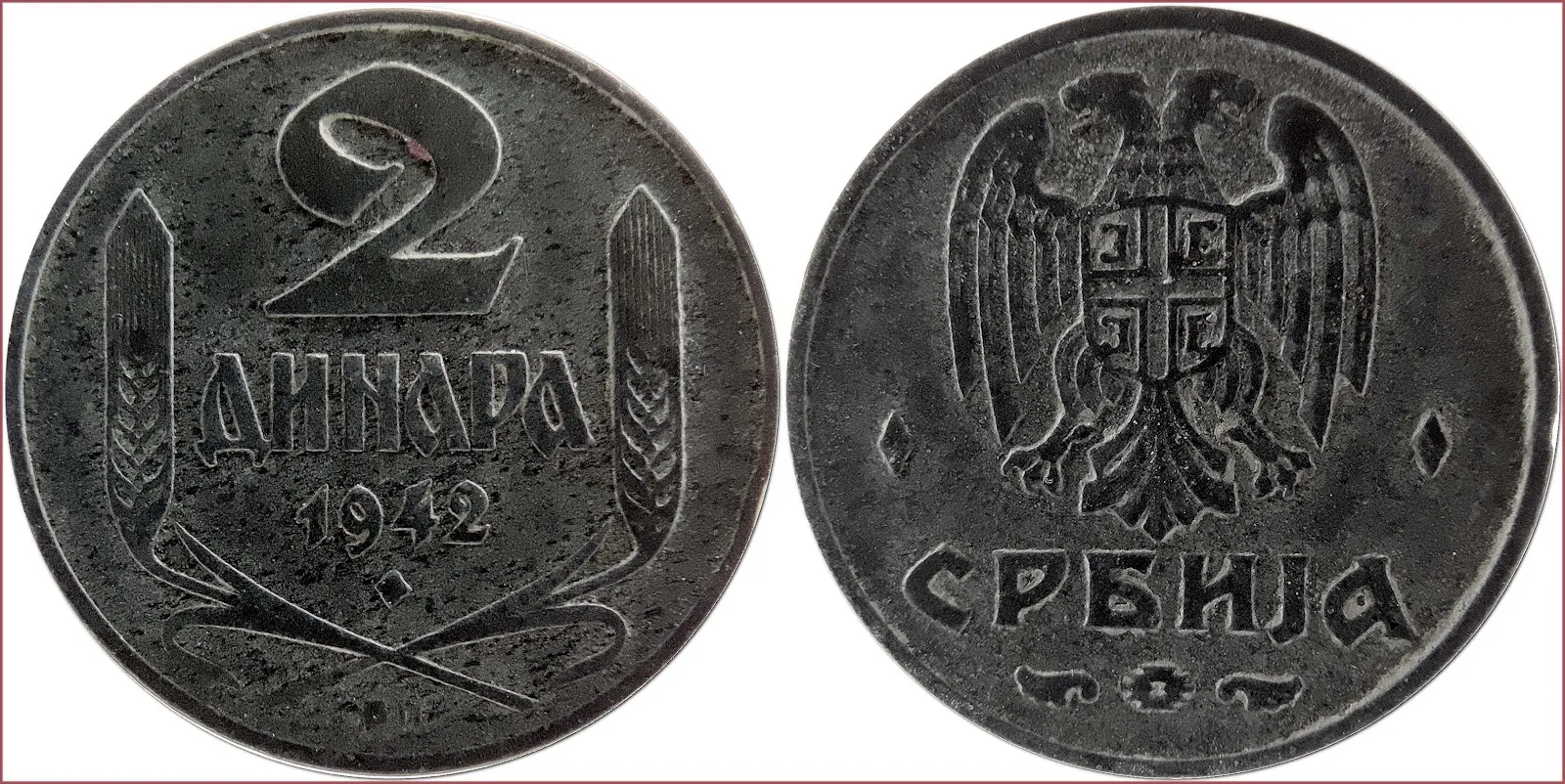DINAR: COIN OF SERBIA
2 dinara (динара), 1942: Serbia (German occupation)
The serbian coin of the period of the Government of National Salvation — the second Serbian collaborationist puppet government (after the Commissioner Government) established on the German-occupied territory of Serbia during World War II.
2 ДИНАРА 1942 between two ears of wheat: 2 dinara (dinars), 1942.
Sign of Budapest mint (Hungary) — БП: Будимпешта (Budapest).
СРБИJА: Serbia.
Coat of arms of Serbia (Government of National Salvation — German-occupied Serbia): the Serbian eagle (double-headed eagle adopted from the Nemanjić dynasty) and the Serbian cross (cross with firesteels) on shield.
Mintage: 40.000.000.
- Zinc: 22 mm - 3.6 g
- Reference price: 3.5$
COIN DINAR — WHERE & WHEN (coins catalog: by names & emitents)
- SERBIA (1875-...) — PRINCIPALITY OF SERBIA + KINGDOM OF SERBIA + GERMAN OCCUPATION (WORLD WAR II) + REPUBLIC OF SERBIA: dinar = 100 para
- YUGOSLAVIA (1925-2002) — STATE OF SLOVENES, CROATS AND SERBS + KINGDOM OF YUGOSLAVIA + DEMOCRATIC FEDERAL YUGOSLAVIA + SOCIALIST FEDERAL REPUBLIC OF YUGOSLAVIA: dinar = 100 para
- BOSNIA AND HERZEGOVINA — KINGDOM OF BOSNIA (14th-15th centuries) + REPUBLIC OF BOSNIA AND HERZEGOVINA (1993-1997; non-circulating coins): dinar
The historical predecessor of the modern dinar is the gold dinar — the main coin of the pre-Islamic state formations of the Middle East and medieval Islamic empires, first issued in the 5th century AD.
In modern world the dinar as a coin and the currency is used (or used relatively recently) in a number of countries of the Arab World (Middle East and North Africa):
- ALGERIA, BAHRAIN, IRAQ, IRAN (dīnār), JORDAN, KUWAIT, LIBYA, PDR YEMEN, FEDERATION OF SOUTH ARABIA, SUDAN, TUNISIA...
The name of the dinar coin came from the name of the ancient Roman silver coin denarius, which became widespread in the territories controlled by Rome about two thousand years ago.
Over time, the dinar spread to the Arab states of Asia and Africa, and also appeared in the lands of the former Ottoman Empire in Europe.











